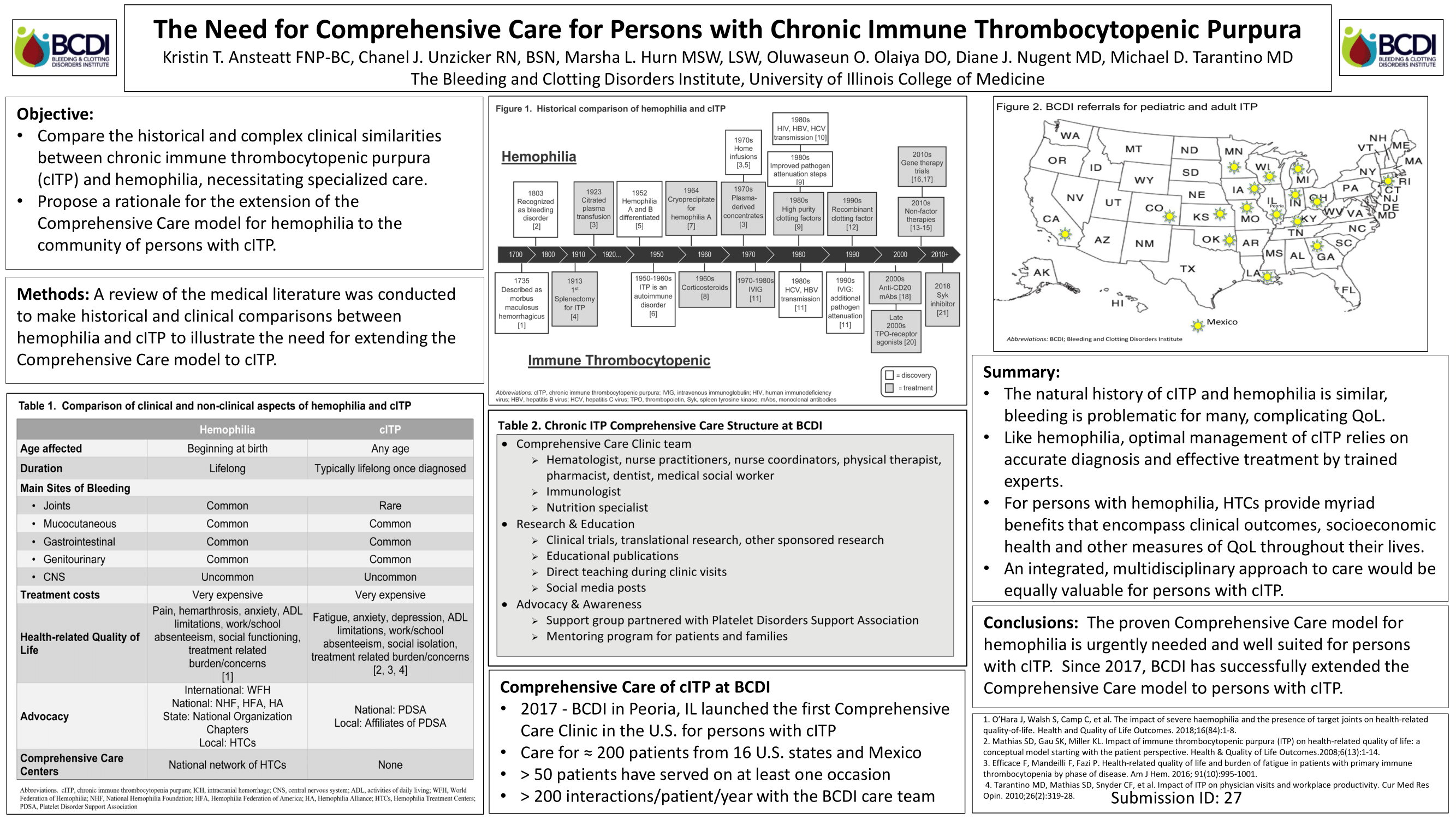National Hemophilia Foundation (NHF) - Posters
The Need for Comprehensive Care for Persons with Chronic Platelet Disorders |
|
|
|

|
Objective:
Chronic immune thrombocytopenic purpura (cITP) is among the most common bleeding disorders and is associated with considerable morbidity and mortality. The complex phenotype of cITP is much like that of hemophilia, necessitating specialized care. The model of Comprehensive Care in Hemophilia Treatment Centers (HTCs) has been recognized to improve many aspects of health, including life expectancy. However, an integrated care model with a reliable population-based surveillance program does not exist for cITP. We propose a rationale for the extension of the Comprehensive Care model for hemophilia to the community of persons with cITP.
Methods:
A review of the medical literature was conducted to make historical and clinical comparisons between hemophilia and cITP to illustrate the need for extending the Comprehensive Care model to cITP.
Summary:
cITP in the United States is likely three times more prevalent than hemophilia. The natural history of cITP and hemophilia is similar, related to bleeding and its sequalae. Bleeding is problematic for many in both disorders, adversely affecting longevity but also complicating employability, insurability and overall quality-of-life (see Table). While myriad drug therapies are available for both cITP and hemophilia, many are very expensive and contribute to specific morbidities and mortality. Like hemophilia, the optimal management of cITP relies on effective treatment and an accurate diagnosis by specially trained experts in bleeding disorders. HTCs are centers of excellence for persons with hemophilia, with benefits that encompass lifespan, socioeconomic health and other measures of quality-of-life. Because of the clinical similarities between hemophilia and cITP, an integrated, multidisciplinary approach to care would be equally valuable to persons with cITP.
In late 2017, the Bleeding and Clotting Disorders Institute (BCDI) in Peoria, Illinois launched the first ever Comprehensive Care Clinic in the U.S. for persons with cITP. Beyond the Comprehensive Clinic team (hematologist, nurse practitioner, nurse coordinator, physical therapist, outreach/education coordinator, pharmacist, dentist, and medical social worker), each cITP patient is seen by an immunologist and dietician. This addition has proven to be beneficial and has led to the diagnosis of additional immunological disorders in some patients.
The ITP program at BCDI provides care for approximately 200 patients from 15 U.S. states and Mexico. Of these, fifty have been served on at least one occasion in the Comprehensive Care Clinic. The response to the Comprehensive Care Clinic for cITP has been tremendously positive and patients have reported an overall improvement in ease of their activities of daily living. Formal investigations of clinical and psychosocial outcomes are in process.
Conclusions:
A better understanding of the natural history of cITP and drug safety in the treatment of cITP is urgently needed. The Comprehensive Care model for hemophilia, with all its related benefits, is well suited for persons with cITP.



